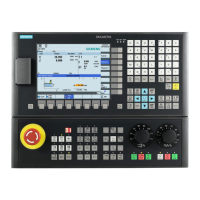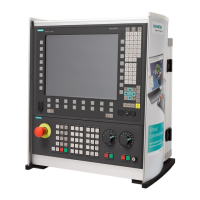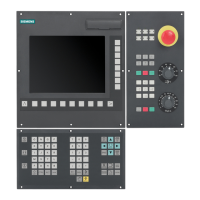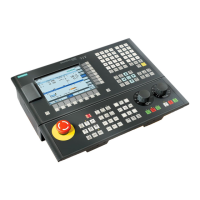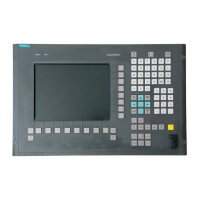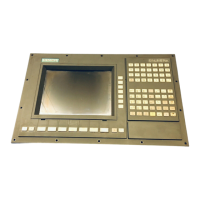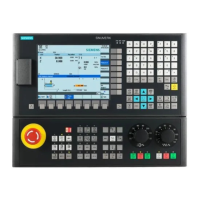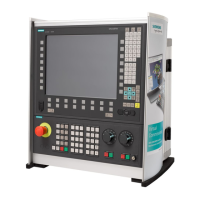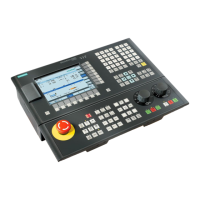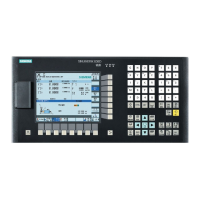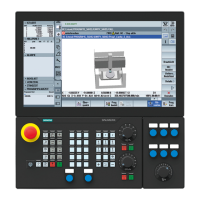K3: Compensations
4.5 Dynamic feedforward control (following error compensation)
Extended Functions
278 Function Manual, 03/2013, 6FC5397-1BP40-3BA1
Setting servo enables
As a result of the compensation relationship, a traversing movement by the base axis may
also cause the compensation axis to move, making it necessary for controller enable signals
to be set for these axes (PLC user program). Otherwise the compensation only has a limited
effect.
Traversing signal output
The traversing signals in the compensation axis are output every time the compensation
function is switched on/off and every time the number of active compensation tables
changes.
Any change in the compensation value caused by the base axis motion does not result in
output of traversing signals in the compensation axis.
4.5 Dynamic feedforward control (following error compensation)
4.5.1 General properties
Axial following error
The remaining system deviation of the position controller when traversing a machining axis is
known as axial following error. Expressed in another way, the axial following error is the
difference between the setpoint position and the actual position of the machine axis.
Effects
Particularly during acceleration in contour curvatures, e.g. circles and corners, this following
error leads to undesirable, velocity-dependent contour violations.
Compensation
The axial following error can be reduced almost to zero with the help of the "dynamic
feedforward control". The function is therefore also called "following error compensation".
Methods
There are two "dynamic feedforward control" methods:
● Speed feedforward control (velocity-dependent)
● Torque feedforward control (acceleration-dependent)
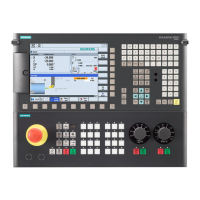
